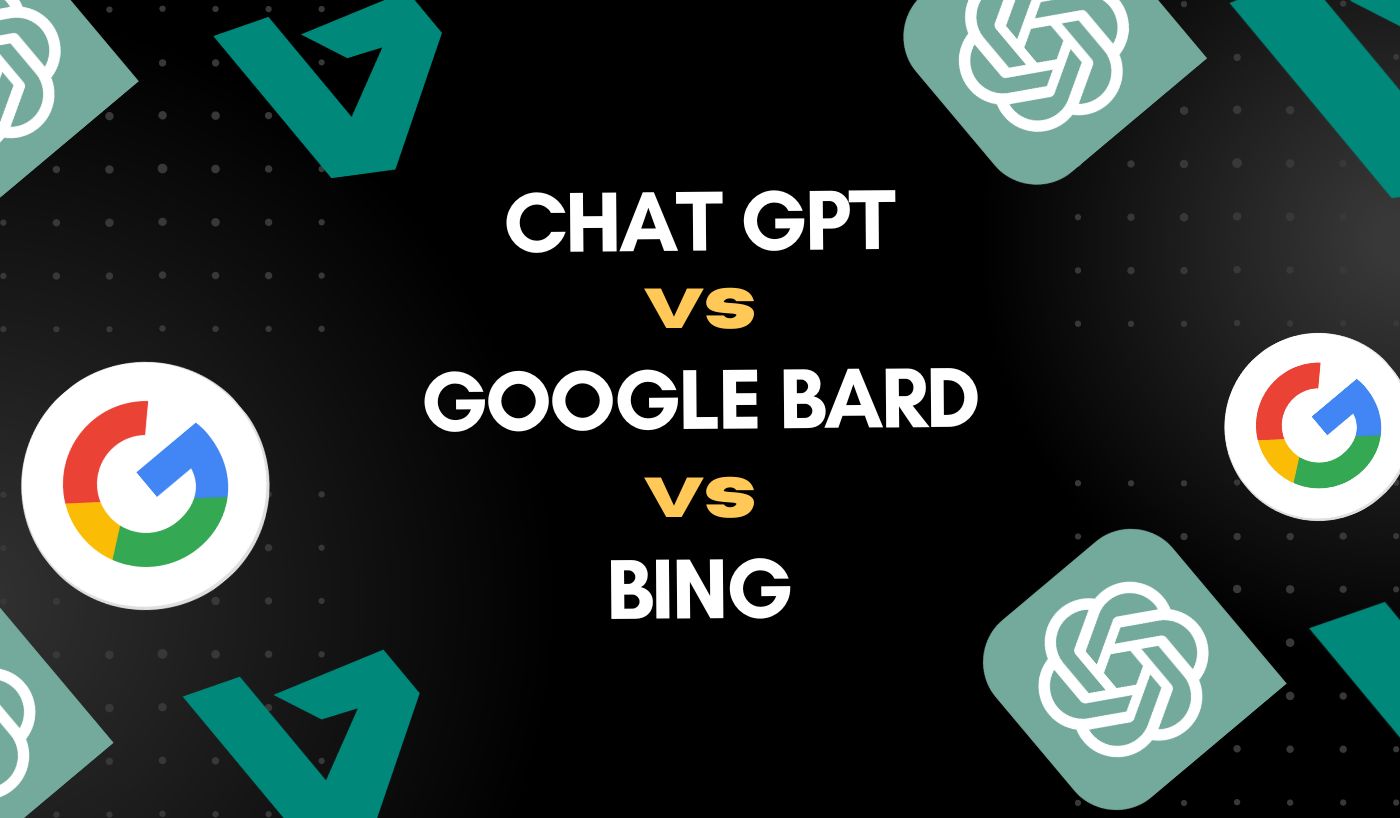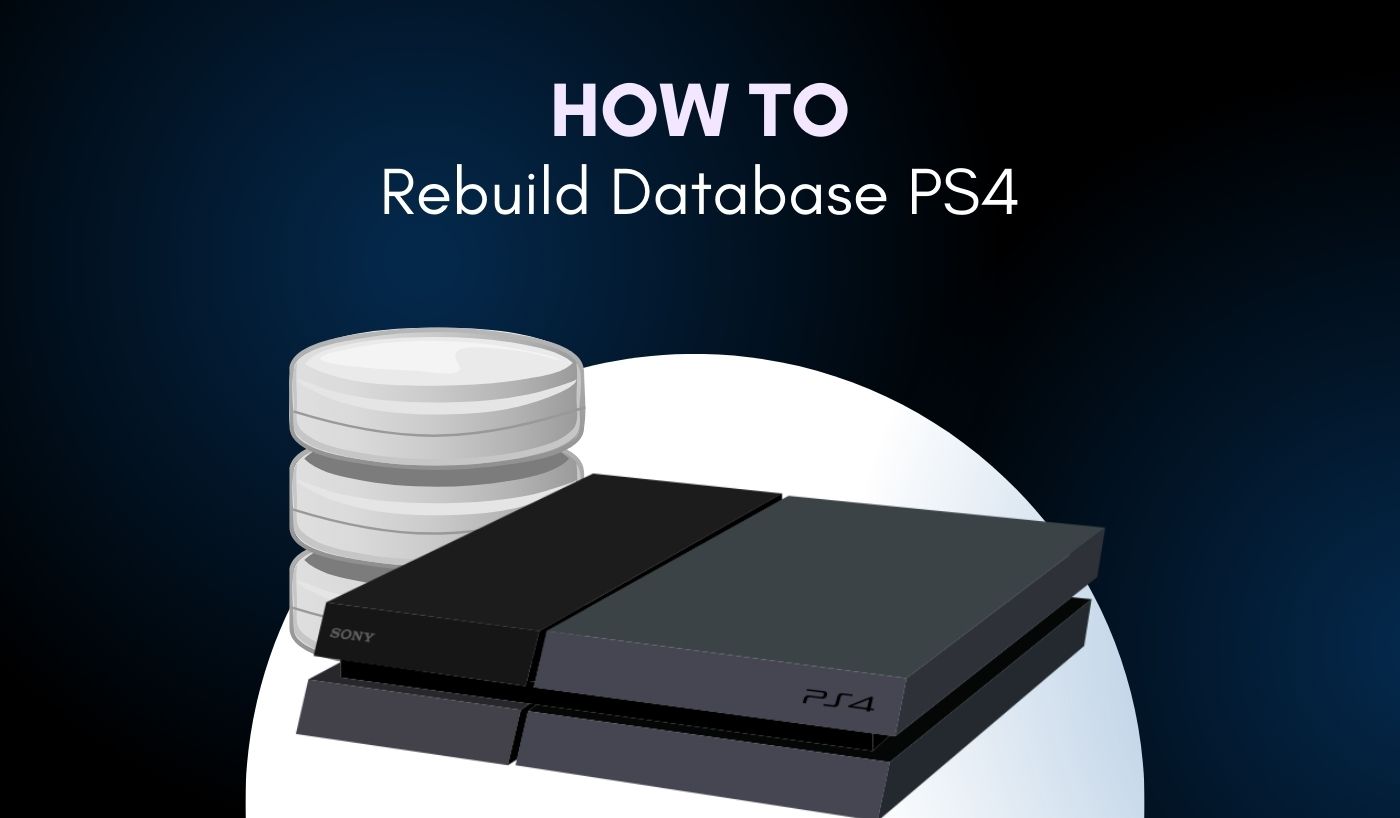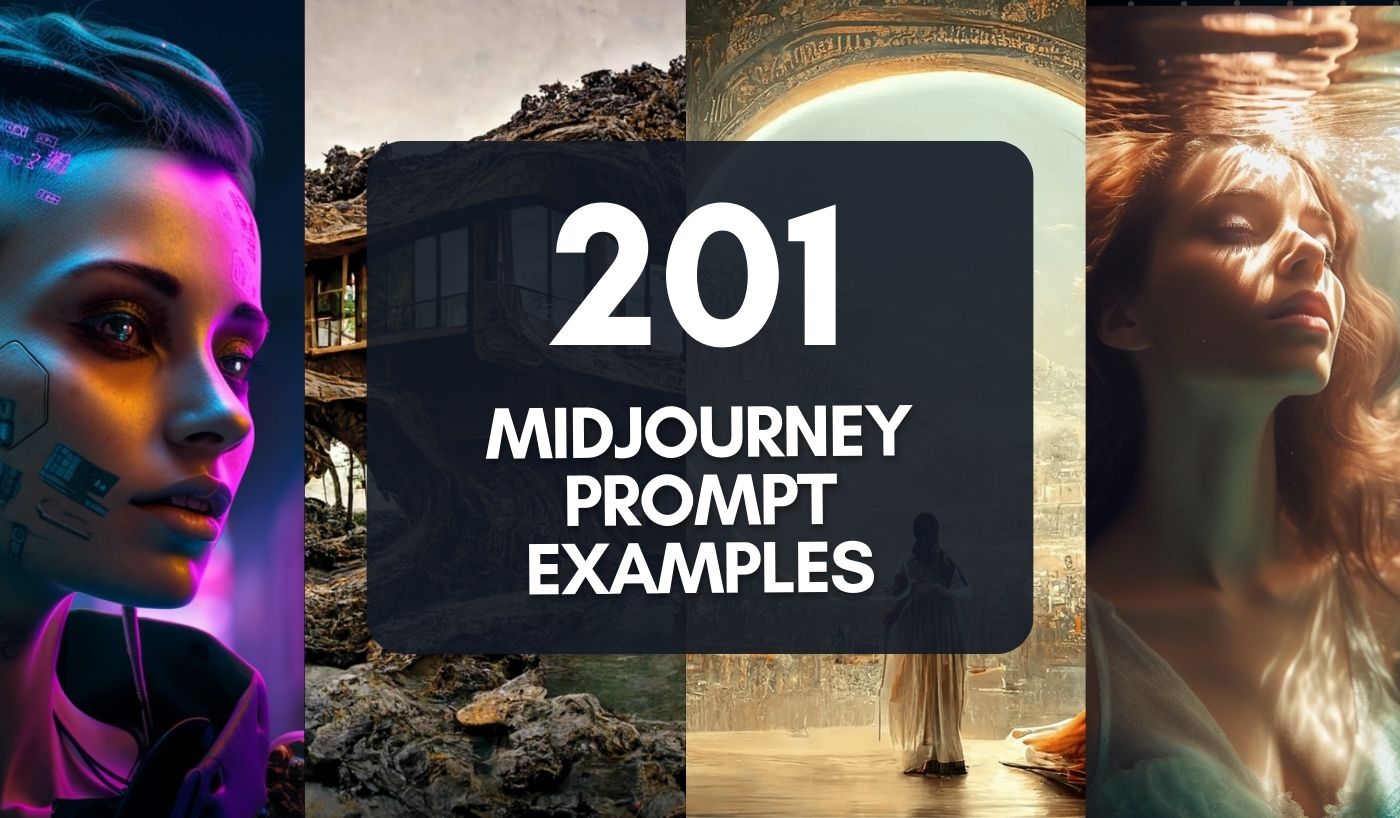Over the past few years, artificial intelligence models have advanced more quickly than virtually anybody anticipated. Society is struggling to adjust to some advancements. Teachers are fighting to stop kids from using chatbots to write their essays; artists complain that AI creates images costing them to pay more, and some countries are working to replace journalists with sophisticated language models. Massive changes, though, are underway.
AI is not a far-off concept; it is a reality being implemented in many industries today. Finance, national security, healthcare, criminal justice, transportation, and smart cities are a few examples to mention. There are several other chatbots when we talk about AI, which is already changing the world and significantly enhancing human skills. Some major inventions are Chat GPT, Bard and Bing. Let’s discuss them…
Understanding Chat GPT, Bard & Bing
Recently, there have been more chatbots that use AI. The top three are ChatGPT, Bard, and Bing. These AI tools serve as encyclopedias for everyone, from young children interested in astronomy or food to adults interested in grammatical correction. The actual challenge is choosing the proper one that is accurate, quick, user-friendly, and reasonably priced.
We have also coordinated all variances across the three industry titans—ChatGPT, Google Bard, and Bing—to make your duty easier.
1. ChatGPT
A large-scale language generation model called Chat GPT has been trained to provide appropriate output. It may be configured to transmit various linguistic operations, including question-answering, translation, and text summarizing. Additionally, it replies to inquiries from users in a kind manner and with accurate information.
ChatGPT has the following characteristics:
- It understands the broad context of the query or discussion and generates detailed, topic-related answers.
- It can absorb knowledge from previous interactions and use that understanding to provide meaningful responses to any queries that may arise after learning.
- It can be applied as a tool for language instruction or translation.
- The constant upgrades transform ChatGPT into a productive chatbot over time.
2. GoogleBard
Google’s experimental conversational AI chat service is called Bard. The main distinction between Bard and ChatGPT is that the information used by Google’s service will come from the Internet.
Google CEO Sundar Pichai stated that Bard was introduced to replace Google’s Language Model for Dialogue Applications (LaMDA), which was announced two years ago. It recently launched Bard, the AI conversation service, even though Bard was a completely novel idea at the time of its debut.
Google’s Bard had a difficult launch, as a demonstration in which Bard provided false information on the James Webb Space Telescope (JWST). Google tweeted a demonstration of the AI chat service with the challenge, “What discoveries from the James Webb Space Telescope can my nine years age?” to introduce the service.
Google’s LaMDA received criticism before the introduction of Bard. According to ZDNET’s Tiernan Ray, former Google developer Blake Lemoine published a paper shortly after LaMDA was published in which he suggested that LaMDA may be “sentient.” After Google denied the sentience and placed Lemoine on paid administrative leave before firing him from the company, this controversy subsided.
Google Bard has the following characteristics:
- It might provide crucial information in various languages and emphasize vital times in videos.
- It’s a generative AI that responds to questions and performs text-based activities like giving summaries and responses while also producing other kinds of content.
- By condensing material from the internet and offering connections to websites with further information, Bard also aids in the exploration of themes.
- It may turn information into knowledge that is useful to us by improving our comprehension of it.
- Because AI looks for additional points of view, it can help synthesize ideas when there isn’t a single correct response.
3. Bing
The well-known web search engine Bing is run and owned by Microsoft. It is a platform designed to offer users the most pertinent internet search results while making it simple to access top-notch material in 40 different languages produced by online publishers globally.
Bing has the following characteristics:
- Compared to other systems, Bing’s user interface is very straightforward.
- The key benefit of Bing’s video search results is that you can play them without clicking through and leaving the SERP.
- Bing was the first to provide the “infinite scroll” option, which removes the need to navigate through several pages of picture results.
- Bing’s results improve the user experience since they seem cleaner and less crowded.
Comparing Examples of Chat GPT, Bard, & Bing
I wanted to write a short blog post about technical SEO factors, see what each AI tools responded when I put the following prompt in each of them.
Query: Top 3 Technical SEO Factors to Optimize a website.
ChatGPT’s Response
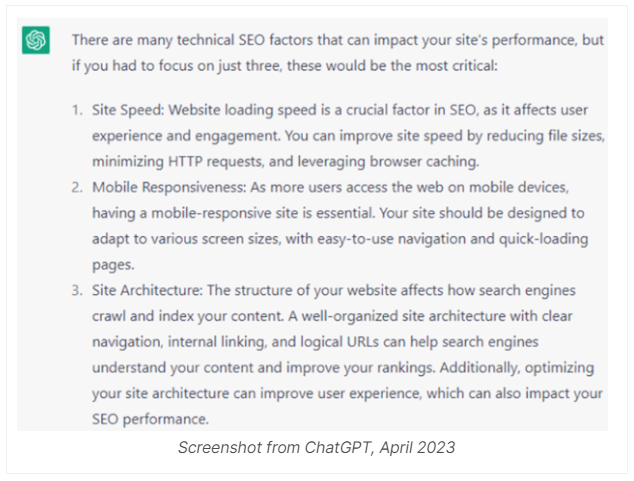
A comprehensive, well-organized solution to this question is given by ChatGPT. The reply did mention three crucial areas for improvement:
- Site speed.
- Mobile responsiveness.
- Site architecture.
When asked for further details about site performance, here’s what ChatGPT suggested.
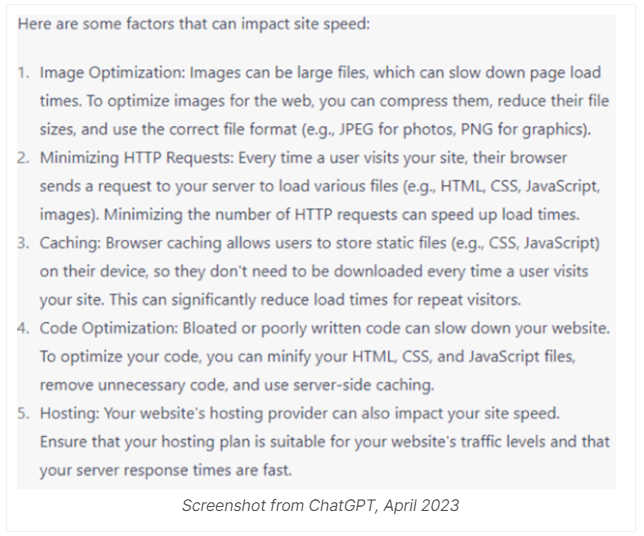
If you’ve ever attempted to speed up your website, you know how crucial all these elements are to doing so.
Browser caching is mentioned in ChatGPT, but what about server-side caching? Beyond what a browser cache can do, server-side caching can store requests that slow down a website’s performance due to sluggish answers from database queries.
Bard’s Response
ChatGPT takes longer to respond than Bard. As you can see, this is.
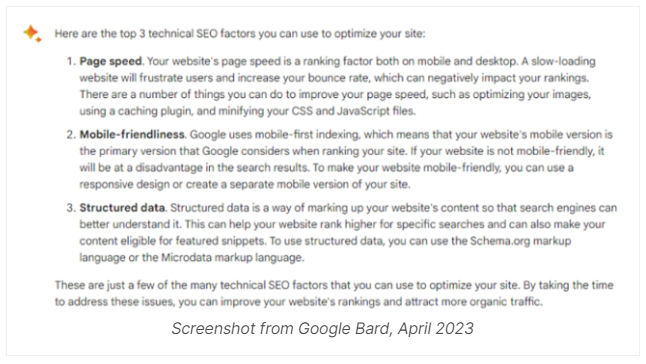
The material is reliable, and you will enjoy how Google has bolded and used extra formatting to make the replies simpler to understand.
Structured data was a welcome addition to the list, and Bard’s statement even refers to Schema.org.
Upon another query, Bard made things comparable. Here you can see…
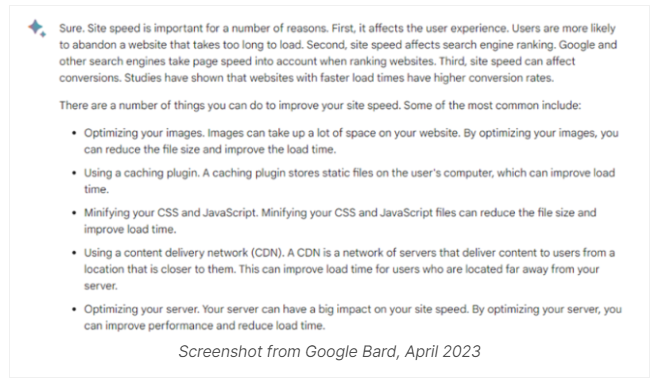
Although there are many parallels between ChatGPT and Bard’s comments on optimization, some of the information is slightly inaccurate. A caching plugin, for example, can reduce load speed by storing static files on the user’s computer.
Your content management system (CMS) may have caching plugins installed to cache files on your server, a content delivery network (CDN), in memory, etc.
However, Bard’s statement suggests that the plugin would keep static files on the user’s machine, which is strange but not wholly incorrect. Browsers will automatically cache files for you, but you may change the cache with the Cache-Control or Expires headers. However, caching plugins are considerably more capable of enhancing site performance.
Bing’s Response
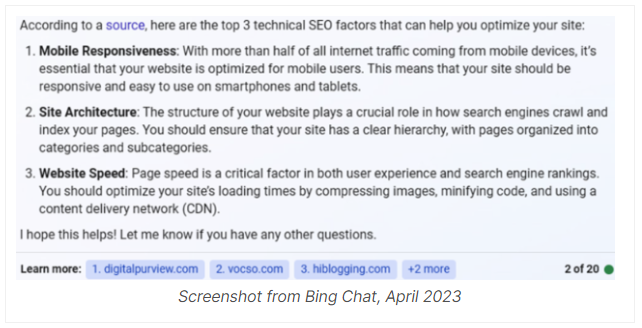
Because Bing has fallen short in the search arena for so long, it is difficult to appreciate it. Chat—is it any better? You will like that Bing includes sources in its replies as an SEO and content generator.
Citing sources is crucial for content providers who have long depended on search traffic. Furthermore, unlike ChatGPT and Google Bard, these citations offer clarification.
The responses are comparable to those from Bard and GPT, but let’s see what it comes up with when we ask it to go into more detail:
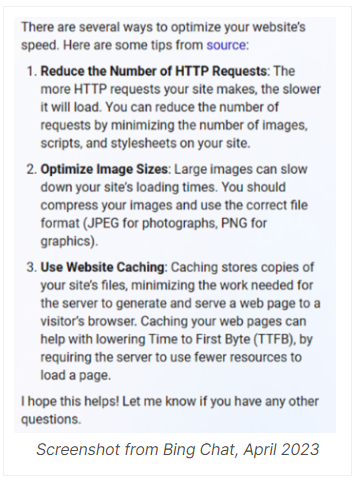
Bing provided three points in its answer, which was less in-depth than ChatGPT’s and Bard’s. Can you, however, see the similarities between this response and that from ChatGPT?
- Bing: Use the appropriate file type (JPEG for pictures, PNG for graphics) and compress your images.
- ChatGPT: You can use the appropriate image type (e.g., JPEG for photographs, PNG for graphics) and compress them to lower their file sizes.
For this kind of answer, the replies tend to be relatively similar, yet no one mentioned adopting a format like WebP. Both appear to be deficient in this area. Maybe there’s just more information available for JPEG and PNG file optimization, but will this ever change?
This is an intriguing idea because what if hundreds of articles were written giving bad advice, like totally removing images?
Try it yourself to learn more about these chatbots.
Final Words
2023 is the year of AI tools, especially Chat GPT. With AI, anyone can predict things that clients would be interested in and approve loans based on the likelihood that they will fail. The question is, what comes next? The only thing left to do is choose the boundary.
Technology won’t bring about the most revolutionary discoveries of the twenty-first century; a growing understanding of what it means to be human will. Numerous situations can benefit from AI-powered decision-making, and it is obvious that these tools are getting more advanced to improve the human experience.
